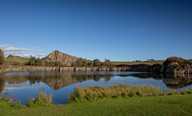Culutre and creative industires have seen strong growth in businesses in the North East since 2015 increasing by 10%.
Employment in North East CA’s Cultural and Creative sector declined by 11% between 2015 and 2019. The pandemic’s impact has also been significant, causing further reduction in employment.
However, employment in the sector is now above pre-pandemic levels (as in 2022). Underlying growth potential in the culture and creative sector is supported by emerging opportunities, including through the North East Screen Industry.
There are significant tourism growth opportunities, with the North East region making up a relatively small share of the UK’s visitor economy:
- Only 1.6% (c.488k) of all international visitors to the UK
- However, the North East region has one of the highest average spending per international visitor in the UK (£638 per person)
- Relatively low number of visitors in the region for business purposes (19%) – however proportionally more compared to UK (16%)
In 2022, visitor attractions in the North East garnered over 5 million domestic visits. This was an increase by over 1million from 2021, but below pre-pandemic levels.
The region’s High Streets decline at a slower rate post-pandemic and the North East saw the second lowest number of closures and net losses since 2017.
Significant capital investment in new visitor related activities planned for next 10 years (>£608m), including at Gateshead Quays.




